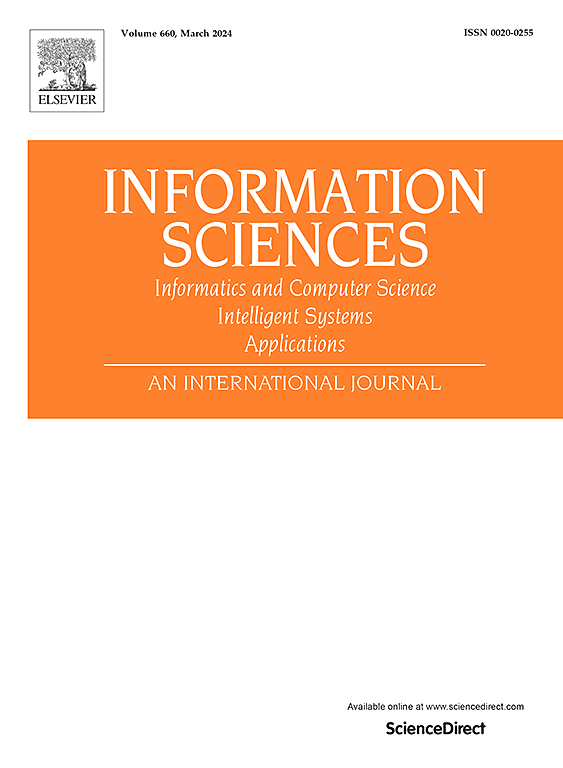Object recognition based on tactile information: A generalized recognition network combining wavelet transform and transformer model for small sample datasets
IF 6.8
1区 计算机科学
0 COMPUTER SCIENCE, INFORMATION SYSTEMS
引用次数: 0
Abstract
Tactile recognition is a crucial pathway for robots in perception and cognitive processing. While deep learning-based methods have shown excellent performance, training deep neural networks demands a substantial number of manually labeled samples. Unfortunately, current tactile recognition datasets lack the samples needed for robust training. To address this, we introduce a generalized tactile recognition method under low-sample conditions, Wave-Tactile-Transformer. Initially, we expand the tactile data using proposed TacGAN, avoiding traditional processes like rotation and cropping that create redundancy, which yields up to 5.8% accuracy improvement over traditional augmentation techniques. We also propose a Transformer framework integrated with multi-scale wavelet transforms, which is applicable to various tactile data formats. The wavelet transform enhances the model’s ability to discern details in tactile images, while the Transformer network refines the comprehension of feature relationships. This dual approach not only significantly reduces computational costs but also boosts object recognition accuracy. Our approach introduces an innovative framework that harmonizes the processing of tactile data across diverse formats. Cross-format tactile dataset experiments achieved a peak recognition accuracy of 96.7%, outperforming conventional CNN-based methods by up to 2.6%, surpassing previous methods. This generalized tactile recognition network offers innovative solutions for robotic tactile perception and grasp control.
基于触觉信息的物体识别:小样本数据集小波变换与变压器模型相结合的广义识别网络
触觉识别是机器人感知和认知加工的重要途径。虽然基于深度学习的方法已经显示出出色的性能,但训练深度神经网络需要大量的手动标记样本。不幸的是,目前的触觉识别数据集缺乏鲁棒训练所需的样本。为了解决这个问题,我们引入了一种低样本条件下的广义触觉识别方法,波-触觉-变压器。最初,我们使用拟议的TacGAN来扩展触觉数据,避免了传统的过程,如旋转和裁剪,这会产生冗余,这比传统的增强技术提高了5.8%的精度。我们还提出了一个集成多尺度小波变换的Transformer框架,该框架适用于各种触觉数据格式。小波变换增强了模型对触觉图像细节的识别能力,而Transformer网络则细化了对特征关系的理解。这种双重方法不仅大大降低了计算成本,而且提高了目标识别的准确性。我们的方法引入了一个创新的框架,以协调不同格式的触觉数据处理。跨格式触觉数据集实验取得了96.7%的峰值识别准确率,比传统的基于cnn的方法高出2.6%,超过了以前的方法。这种广义的触觉识别网络为机器人的触觉感知和抓取控制提供了创新的解决方案。
本文章由计算机程序翻译,如有差异,请以英文原文为准。
求助全文
约1分钟内获得全文
求助全文
来源期刊

Information Sciences
工程技术-计算机:信息系统
CiteScore
14.00
自引率
17.30%
发文量
1322
审稿时长
10.4 months
期刊介绍:
Informatics and Computer Science Intelligent Systems Applications is an esteemed international journal that focuses on publishing original and creative research findings in the field of information sciences. We also feature a limited number of timely tutorial and surveying contributions.
Our journal aims to cater to a diverse audience, including researchers, developers, managers, strategic planners, graduate students, and anyone interested in staying up-to-date with cutting-edge research in information science, knowledge engineering, and intelligent systems. While readers are expected to share a common interest in information science, they come from varying backgrounds such as engineering, mathematics, statistics, physics, computer science, cell biology, molecular biology, management science, cognitive science, neurobiology, behavioral sciences, and biochemistry.
 求助内容:
求助内容: 应助结果提醒方式:
应助结果提醒方式:


